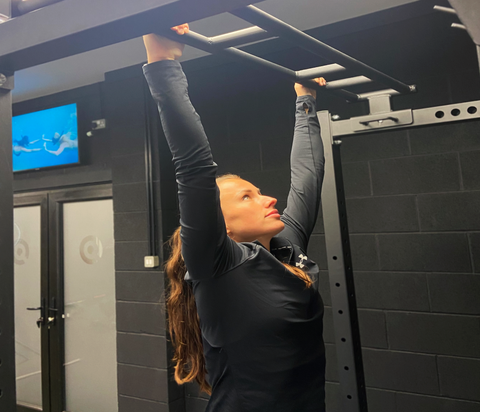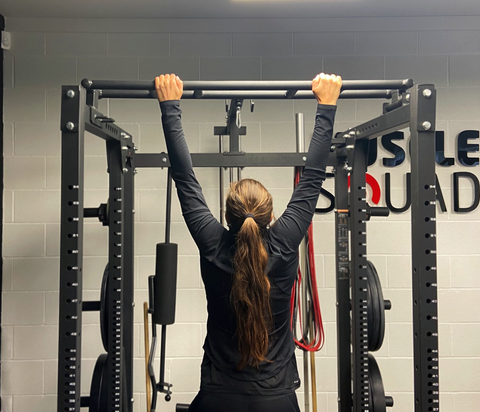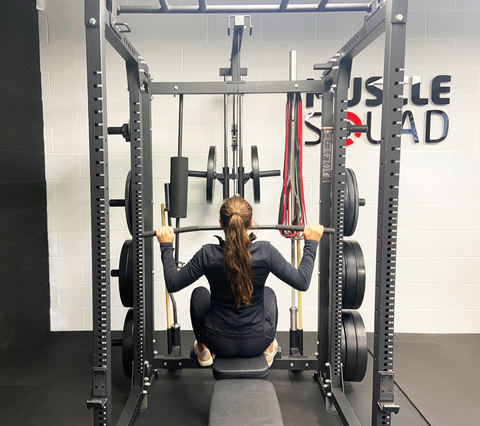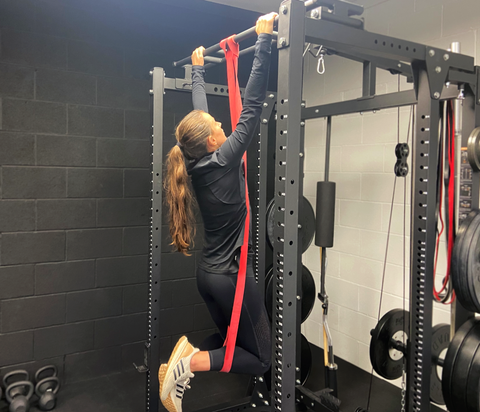There are a few exercises that people who are new to training already know about, push-ups, sit-ups, and of course, pull-ups. They’re a staple in the fitness industry, yet they’re an exercise that is notorious for incorrect form, which often leads to stalled progression and frustration.
In this article, I’ll be going through common form mistakes and progressions for all experience levels, from the very beginner who has that goal of “one full pull-up” to the advanced that are looking for ways to tweak their form to continue progress.
The best way to determine what’s classified as the ideal form is to first look at the muscles the pull-up works.
The pull-up predominantly adds back width through the development of the Lattisimus Dorsi. Subsequently, due to its mechanics, it builds size in the biceps as a secondary muscle group.
Common Mistakes
The first issue that gym-goers tend to have when doing pull-ups is letting their bodies drift away from the pull-up bar. This makes it harder for the largest muscles of the back to work efficiently and places a lot more strain on the biceps. I find that staring straight up diagonally towards the ceiling reduces the tendency for this to happen and allows the lats to do what they’re made for, which is adduction (or bringing the arm to the side).

Another issue is rocking and swaying during multiple pull-ups. This is a combination of letting the body drift away from the bar and lack of control during the lowering of the body. There are two ways you can fix this. It’s best for the beginner to just lightly touch your foot on the ground to stop the swaying, or you can reset completely. For the advanced, simply spending an extra second at full stretch should reduce the swaying and strengthen your grip and increase time under tension on the muscles.

Those are the two main form mistakes I’ve seen with the pull-up. A lot of other pull-up issues you may have come across can usually be fixed by simply getting stronger and proficient in the movement. So let’s get into some progression steps to get you pumping out multiple reps!
Corrective Exercises
Lat Pull Down
This is the first place I’ll send a client before we even get onto a pull-up bar. If you don’t have access to a pulldown attachment for your power rack, it’s super easy to create one with some resistance bands and attach either directly above with a seat below or lying face down and attaching it in front and replicating the movement. It’s a great exercise to strengthen the lats and as close as you can get to the movement without the stability and momentum issues previously mentioned. Focus on the cue of looking to the ceiling and getting your elbows down to your sides. Don’t worry about how far the bar goes. Try to get it just below your collarbone.


Band Assisted Pull-Ups
What better way to perfect the pull-up than doing a pull-up? Albeit with a little help. Band-assisted pull-ups are great because they are specific and provide assistance when you’re at the hardest part of the pull-up (full arm extension). To set it up, all you have to do is connect a resistance band based on your level of assistance (largest band for more support, smaller band for the least). Tie the resistance band onto itself on the centre of the pull-up section of your power rack and pull it down towards you where you can either loop it around your knees or feet if you have the flexibility and reach up to the bar, and you’re good to go!


When it comes to these, it is important you keep your hips in line with the rest of your body. It’s easy for the band to force the hips out behind you, so be sure to keep your body as straight as possible.
-
So there you have it. Hopefully, you’ve learned a few key points to get the most out of your pull-ups and a couple of exercises to help you perfect your form. They’re a great exercise that can be performed almost anywhere, and the size and width they can add to your back are up there with the best!

 Feb 01, 2022 - Lewis Kite
Feb 01, 2022 - Lewis Kite


Leave a comment: